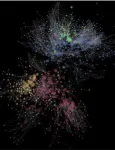(Press-News.org) A study finds that most engineering PhD graduates will never secure a tenure-track faculty position. Over the past 50 years, the number of full-time faculty positions in US universities has steadily declined while production of science and engineering PhD graduates has nearly doubled. Siddhartha Roy and colleagues analyzed data on PhD graduates and tenure-track and tenured faculty members across all engineering disciplines from 2006–2021. The average annual likelihood of securing a tenure-track faculty position in engineering during this 16-year period was 12.4%. The likelihood of securing a tenure-track faculty position was 18.5% in 2006. By 2014, the likelihood had fallen to 10.9%. In 2021, the likelihood had increased slightly to between 11.3% and 12%. Subdisciplines with the lowest placement rates for newly minted PhDs include engineering management, petroleum, biomedical, nuclear engineering, metallurgical and materials, and environmental engineering. Previous research has found that nearly 80% of tenure-track engineering faculty members hired during 2011–2020 were trained at just 20% of US universities, suggesting that the likelihood of finding a tenure-track engineering position depends on the prestige of the degree-granting university. According to the authors, alternative-academic career tracks such as careers in government and industry should be emphasized during PhD training to ensure student expectations match the realities of the job market.
END
Few tenure-track jobs for engineering PhDs
2024-05-07
ELSE PRESS RELEASES FROM THIS DATE:
Hidden citations in physics
2024-05-07
In the scientific literature, a citation acts as a mechanism to signal prior knowledge, enhance credibility, and protect against plagiarism. But it also gives credit to the individual or team who established or discovered the knowledge in question, and citations have thus emerged as a metric to measure the impact of a work or researcher. However, when a discovery or technique becomes common knowledge, scientists often stop bothering to cite it. Thus, the most impactful work is often undercited. Albert-László Barabási ...
Wildfire risk management in the era of climate change
2024-05-07
A Perspective explores lessons learned from recent deadly wildfires and proposes a strategy for managing wildfire risk. Wildfire risk and wildfire deaths are on the rise due to climate change, policies of fire suppression, and development in the wildland-urban interface. The August 8, 2023, fire that destroyed the historic town of Lahaina, Hawaii, claimed 98 lives, in part due to a failure to alert residents to the danger. In 2018, 104 lives were lost in a fire in Mati, Greece, for which there were also no alerts. For both ...
A smart neckband for tracking dietary intake
2024-05-07
A smart neckband allows wearers to monitor their dietary intake. Automatically monitoring food and fluid intake can be useful when managing conditions including diabetes and obesity, or when maximizing fitness. But wearable technologies must be able to distinguish eating and drinking from similar movements, such as speaking and walking. Chi Hwan Lee and colleagues propose a machine-learning enabled neckband that can differentiate body movements, speech, and fluid and food intake. The neckband’s sensor module includes ...
Gut bacteria metabolite shows promise of fighting inflammatory bowel disease
2024-05-07
Gut microbiota or the population of microbial inhabitants in the intestine, plays a key role in digestion and maintenance of overall health. Any disturbance in the gut microbiota can, therefore, have a systemic impact. Intestinal microbes metabolize dietary components into beneficial fatty acids (FAs), supporting metabolism and maintaining host body homeostasis. Metabolites originating from polyunsaturated fatty acids (PUFAs), influenced by gut microbes such as Lactobacillus plantarum, exhibit potent effects on ...
Breakthrough paves the way for next generation of vision implants
2024-05-07
A group of researchers from Chalmers University of Technology in Sweden, University of Freiburg and the Netherlands Institute for Neuroscience have created an exceptionally small implant, with electrodes the size of a single neuron that can also remain intact in the body over time – a unique combination that holds promise for future vision implants for the blind.
Often when a person is blind, some or part of the eye is damaged, but the visual cortex in the brain is still functioning and waiting for ...
New study finds increase in exposures to synthetic tetrahydrocannabinols among young children, teens, and adults
2024-05-07
(COLUMBUS, Ohio) – A sharp rise in exposures to synthetic cannabis products among youth — some leading to hospitalization — highlights the need for increased education around the dangers of exposure and increased focus on safe storage and packaging, according to pediatricians and researchers at Nationwide Children’s Hospital and the Central Ohio Poison Center.
A new study conducted by researchers at the Center for Injury Research and Policy of the Abigail Wexner Research Institute at Nationwide Children’s Hospital and the Central Ohio Poison Center examined trends in calls to poison ...
Dogma-challenging telomere findings may offer new insights for cancer treatments
2024-05-07
A new study led by University of Pittsburgh and UPMC Hillman Cancer Center researchers shows that an enzyme called PARP1 is involved in repair of telomeres, the lengths of DNA that protect the tips of chromosomes, and that impairing this process can lead to telomere shortening and genomic instability that can cause cancer.
PARP1’s job is genome surveillance: When it senses breaks or lesions in DNA, it adds a molecule called ADP-ribose to specific proteins, which act as a beacon to recruit other ...
Scientists cooked pancakes, Brussels sprouts, and stir fry to detect an oxidant indoors for the first time
2024-05-07
A feast cooked up by UBC researchers has revealed singlet oxygen indoors for the first time.
Oxi-don’t
Singlet oxygen is an oxidant. These chemical compounds can be beneficial—ozone in the stratosphere is one example—but can also cause stress to our lungs, contributing to the development of cancer, diabetes, and heart disease in the long term.
Cooking foods can release brown carbon, molecules with the potential to create oxidants when they absorb light. In addition, exposure to cooking emissions has been linked to chronic diseases in chefs.
Historically, it was thought there wasn’t enough light indoors to have much ...
Quantum breakthrough: World’s purest silicon brings scientists one step closer to scaling up quantum computers
2024-05-07
More than 100 years ago, scientists at The University of Manchester changed the world when they discovered the nucleus in atoms, marking the birth of nuclear physics.
Fast forward to today, and history repeats itself, this time in quantum computing.
Building on the same pioneering method forged by Ernest Rutherford – "the founder of nuclear physics" – scientists at the University, in collaboration with the University of Melbourne in Australia, have produced an enhanced, ultra-pure form of silicon that allows ...
New super-pure silicon chip opens path to powerful quantum computers
2024-05-07
Researchers at the Universities of Melbourne and Manchester have invented a breakthrough technique for manufacturing highly purified silicon that brings powerful quantum computers a big step closer.
The new technique to engineer ultra-pure silicon makes it the perfect material to make quantum computers at scale and with high accuracy, the researchers say.
Project co-supervisor Professor David Jamieson, from the University of Melbourne, said the innovation – published today in Communication Materials, a Nature journal – uses qubits of phosphorous atoms implanted ...




